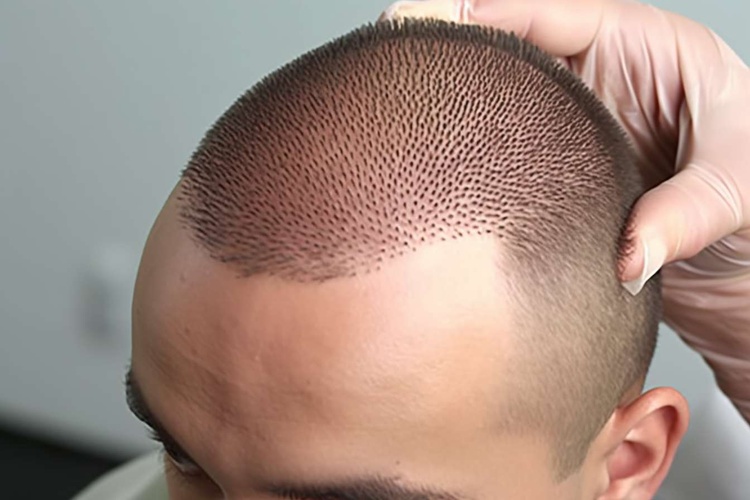Hair Loss Solutions: Modern Medical Advances
Hair loss affects millions of people worldwide, impacting confidence and quality of life across all age groups. While genetics plays a significant role in pattern baldness, modern medical science has developed sophisticated approaches that go far beyond traditional remedies. Today's hair restoration field combines cutting-edge technology with proven medical techniques, offering hope to those experiencing various forms of hair loss. From non-invasive treatments to advanced surgical procedures, the landscape of hair restoration has transformed dramatically in recent years.

Understanding Hair Regrowth: The Science Behind Modern Treatments
Hair growth follows a natural cycle consisting of three phases: anagen (growth), catagen (transition), and telogen (resting). Understanding this cycle is crucial for effective treatment, as different interventions work at various stages. Modern hair restoration focuses on extending the anagen phase while minimizing factors that cause premature hair follicle miniaturization.
Dihydrotestosterone (DHT), a hormone derived from testosterone, is the primary culprit in androgenetic alopecia, the most common form of hair loss. Contemporary treatments target DHT production or block its effects on hair follicles. Finasteride and dutasteride are FDA-approved medications that inhibit the enzyme responsible for DHT conversion, showing significant success in slowing hair loss and promoting regrowth in clinical studies.
Minoxidil, originally developed as a blood pressure medication, remains a cornerstone treatment due to its ability to increase blood flow to hair follicles and extend the growth phase. Available in various concentrations, it can be combined with other therapies for enhanced results.
Beyond Old Methods: A Guide To Modern Hair Restoration Techniques
Traditional hair restoration methods often relied on basic transplantation techniques with limited success rates. Modern approaches have revolutionized the field through technological advancement and refined surgical methods.
Follicular Unit Transplantation (FUT) and Follicular Unit Extraction (FUE) represent significant improvements over older techniques. FUE, in particular, has gained popularity due to its minimally invasive nature and reduced scarring. The procedure involves extracting individual hair follicles from donor areas and transplanting them to areas experiencing hair loss.
Robotic hair transplantation systems now assist surgeons in achieving greater precision and consistency. These systems use artificial intelligence to identify optimal donor hairs and create recipient sites with mathematical precision, reducing human error and improving outcomes.
Platelet-Rich Plasma (PRP) therapy has emerged as a promising non-surgical option. This treatment involves extracting the patient’s blood, concentrating the platelets, and injecting the plasma into the scalp to stimulate hair growth through growth factors and proteins.
Low-Level Laser Therapy (LLLT) devices, available as caps, combs, and helmets, use specific wavelengths of light to stimulate cellular activity in hair follicles. Clinical studies have shown modest improvements in hair density and thickness with consistent use.
Finding The Right Way To Restore Your Hair: What To Know Now
Choosing the appropriate hair restoration method requires careful consideration of multiple factors including the extent of hair loss, age, lifestyle, and budget. The Norwood Scale for men and Ludwig Scale for women help classify hair loss patterns and guide treatment selection.
Consultation with qualified dermatologists or hair restoration specialists is essential for proper diagnosis and treatment planning. These professionals can identify underlying causes of hair loss, such as thyroid disorders, nutritional deficiencies, or autoimmune conditions, which may require different therapeutic approaches.
Combination therapies often yield superior results compared to single treatments. For example, combining medication with PRP therapy or using topical treatments alongside laser therapy can enhance overall effectiveness.
Patient expectations must align with realistic outcomes. While modern treatments can significantly improve hair density and appearance, complete restoration to pre-loss conditions may not always be achievable. Understanding the timeline for results is crucial, as most treatments require several months to show visible improvements.
| Treatment Type | Provider/Method | Cost Estimation | Expected Timeline |
|---|---|---|---|
| Finasteride (Generic) | Licensed Physicians | $20-60/month | 6-12 months |
| FUE Hair Transplant | Specialized Clinics | $4,000-15,000 | 8-12 months |
| PRP Therapy | Dermatology Centers | $500-1,500/session | 3-6 months |
| LLLT Devices | Home Use/Clinics | $200-3,000 | 4-6 months |
| Minoxidil Treatment | Pharmacies/Online | $15-50/month | 3-6 months |
Prices, rates, or cost estimates mentioned in this article are based on the latest available information but may change over time. Independent research is advised before making financial decisions.
The future of hair restoration continues to evolve with emerging technologies like stem cell therapy, gene therapy, and advanced biomaterials. Research into hair cloning and follicle regeneration may eventually provide solutions for individuals with extensive hair loss who currently have limited options.
Success in hair restoration often depends on early intervention and consistent treatment adherence. Regular monitoring and adjustment of treatment plans ensure optimal outcomes and help address any side effects or complications that may arise during the restoration process.




